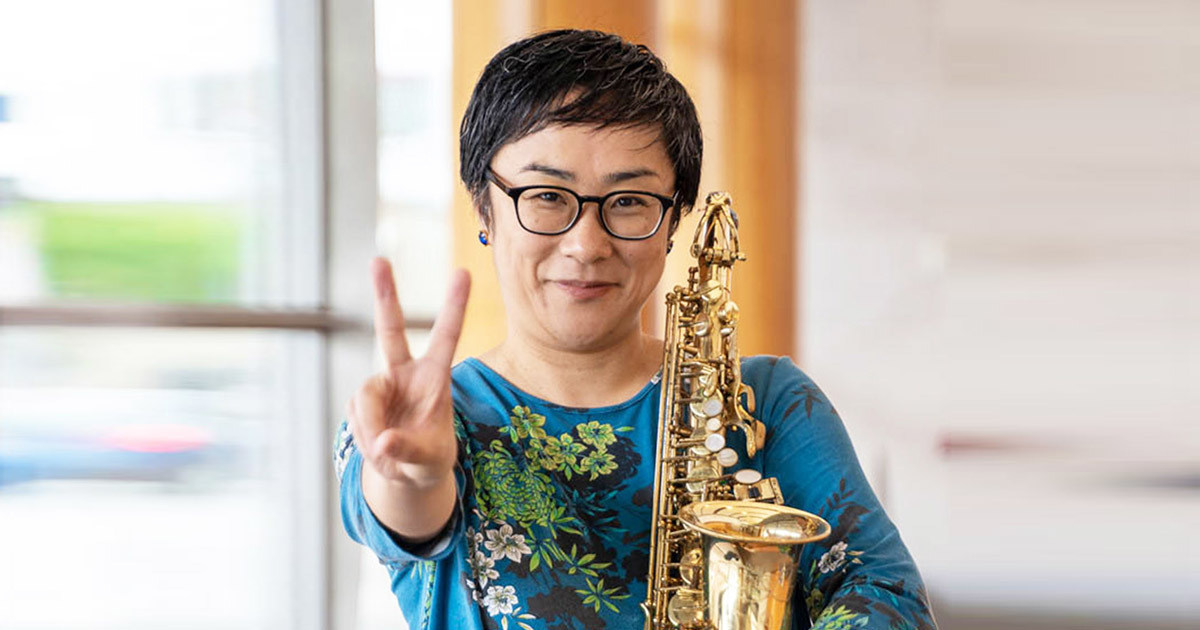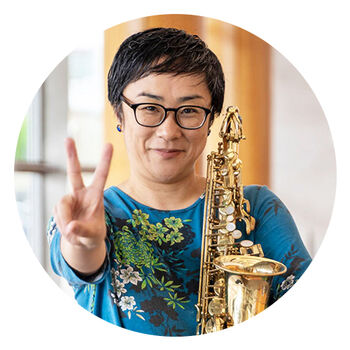A Musician's Wellness Overview: Play Without the Pain
by Chisato Eda Marling
Date Posted: March 27, 2017

Could you tell us about musician’s wellness? From your perspective, what is it and how did you get your start?
Chisato Eda Marling: Anything and everything that can help us perform our instruments better in a healthy, non-injury way. Anything from sleep, nutrition, stretching/strengthening of our body, knowledge of performance related injuries, and ergonomics to performance anxiety.
At Eastman School of Music, I took “Keys to Healthy Music.” I was an intern to Eastman’s physical therapist for several semesters. I also took Alexander Technique.
What have you learned, or are learning, while exploring this field?
CEM: I learned to listen to what my body is telling me more.
I used to just “go, go, go!” in terms of practicing.
I have had chronic tendinitis since I was 12. I was told to quit music by my doctor.
If you wish to have a long successful musical career, warming up (not long tones or scales!), ample breaks in between sessions, and COOL DOWNS are quite important especially if you are prone to injuries.
Also, I have learned to approach the way I think of performance the same way as I think about my body. It is not just notes or musicality. How we take care of our bodies; PRIOR, DURING, and AFTER the performance has a huge impact. When I say “body,” is it not just our physical one, but also our mental and cognitive sides. What we say to ourselves about our practice/performance affect our outcome.
Could you elaborate on your warm up and cool down routine?
CEM: My warm up starts when I take a shower in the morning; stretching my arms and chest muscles. Before I play, I put my arms (from my elbow to my hands) under very warm water. This is done to increase blood flow and to warm up my muscles in my forearm. This also helps reducing tension. I then stretch my arms, shoulders, chest, and back.
For my cool down, I put my arms under cold water. This is similar to when a professional football player takes an ice bath, in a way. Massage therapists sometimes use this technique called ice massages. This is done to reduce pain, inflammation, and spasms in soft muscle tissue. After that, I massage my arms and shake it. I also do the same stretch exercises from the morning.
Taking care of your muscles is absolutely necessary for a long lasting musical career. These are similar concepts used by elite athletes. You may be fine right now, but as we age, our muscles do not heal as quickly as when we are young, so we must take care of them.
Another important and often overlooked aspect is to try to take time to relax. It is a more challenging task than one might think, but it helps your muscles to wind down. Take time away from screens such as your phone, your computer, and your television to calm your mind and relax your body. I make time in my day to meditate as I find it helps to remove the day’s tension.
Taking care of your muscles is absolutely necessary for a long lasting musical career. - Chisato Eda Marling
How has developing tendonitis at a young age impacted you over the years?
CEM: It has had a tremendous impact on my day-to-day life. I do not feel any pain when I was playing the saxophone, but then the pain is overwhelming when I stopped playing. I learned to block any pain while performing.
What happens next is that every other activity after that, such as holding my teacup or opening the door would give me terrible pain. This is NOT a good way to go about it, obviously, which is why I feel very passionate about preventing these problems in younger musicians and educating ourselves to have a better performing experience while still having a balanced and healthy life outside of music.
How does your knowledge in this field impact you as a performer and teacher?
CEM: As a performer, I pace myself more. I know my limits such as how much I can handle in terms of playing time. For example, when the Vertex Saxophone Quartet (which I am a cofounder of) rehearses I try to listen to and feel my body in order not to over play.
To get more experience in a performance atmosphere, I recreate the performance experience in my practice sessions. When dealing with performance anxiety, it is a great idea to simulate the situation being on stage. That means that not only play the pieces from the beginning to the end, but also create the physical atmosphere, such as run in place and get my heart rate up to create a similar stage with more adrenaline as I play the repertoire.
Having a background in musician’s wellness has been a tremendous help in my teaching as well.
A lot of students have performance anxiety. It is like a game, we try to untangle what keeps them stuck there and guide them to a more positive experience. I take a great care a few weeks prior to their important performance, as their threshold is quite thin during that time; they usually have midterms, papers to finish, and presentations to prepare at the same time. It is important as a teacher to help them plan so that they can go through the performance in a healthy, positive way.
What are some valuable resources musicians can utilize regarding wellness?
CEM: www.bulletproofmusician.com is a website that I like by violinist Nao Kageyama, who worked with Don Greene. It teaches musicians how to cope with performance anxiety and promotes better performance experiences.
Performance anxiety is something I developed later in life and became very interested in overcoming it. It is definitely something we all can learn to control.

About the Author
Chisato Eda Marling is a soloist, chamber musician, and a teacher around the Greater Rochester area. She teachers at Nazareth College, Eastman Community Music School and Rochester Institute of Technology. She is the co-founder of the Vertex Saxophone Quartet.
As an educator, she has served as an adjudicator for the Hochstein Recital Competition, the Rochester Philharmonic Young Artist Competition, and for the New York State Music Teachers Association Collegiate Young Artist Woodwind Competition. Chisato also held teaching positions at Roberts Wesleyan College, Houghton College, and Lutheran Summer Music Academy.
Chisato received a Bachelor of Music degree from Musashino Academia Musicae, Tokyo, Japan, a Master of Music degree from the University of Minnesota and a Doctor of Musical Arts in Performance and Literature with a minor in Musician’s Wellness from the Eastman School of Music. Chisato performs exclusively on the Vandoren products and is a Vandoren Performing Artist.